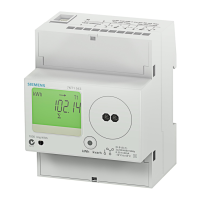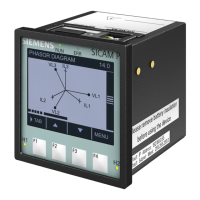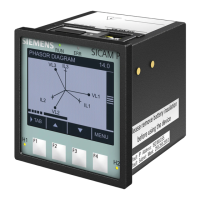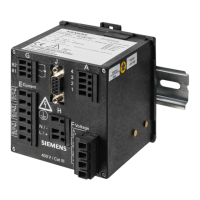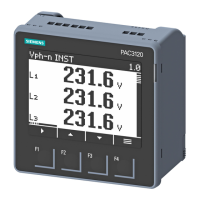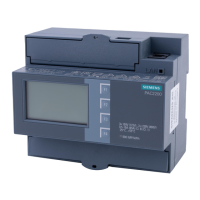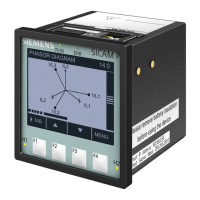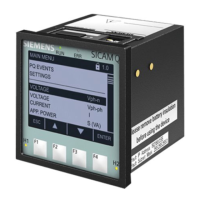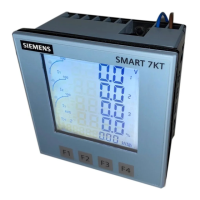
Do you have a question about the Siemens SMART 7KT and is the answer not in the manual?
| Brand | Siemens |
|---|---|
| Model | SMART 7KT |
| Category | Measuring Instruments |
| Language | English |
Describes the manual's purpose and intended audience for the SMART 7KT meter.
Outlines the necessary electrical engineering knowledge for understanding the manual.
Lists the items included in the product carton for the SMART 7KT meter.
Covers DANGER, CAUTION, and general safety advice before installation and operation.
Details the display type, size, and indications on the SMART 7KT meter.
Covers specifications for wiring input, measuring inputs, and auxiliary supply.
Describes how the device retains settings during power interruptions.
Details Current/Potential Transformer settings and the device's power consumption.
Specifies operating conditions, humidity, and mounting requirements.
Outlines protection class, degree of protection, and physical dimensions/weight.
Details the parameters for the digital input functionality.
States compliance with IEC standards, IPC electronics assembly, and ROHS.
Instructions for preparing the panel cutout and mounting the meter using clamps.
Specifies the minimum distance required between meters during panel mounting.
Provides essential guidelines for safe installation and proper wiring of the device.
Details the step-by-step process for removing the meter from its panel.
Illustrates the wiring for a 3-phase 4-wire system with CTs.
Shows wiring for 3-phase 3-wire and 1-phase 2-wire configurations.
Instructions to display the 8-digit serial number of the SMART 7KT meter.
Explains the functionality and switching between automatic and manual modes.
Details the procedure for entering the password to start configuration mode.
Describes how to use function keys to enter and change configuration parameters.
Lists configurable parameters, their ranges, and default factory settings.
Shows how to read line/phase voltages, currents, and harmonic content using F1 key.
Explains how to view voltage, current, power factor, and frequency for each phase using F2 key.
Details reading power factor, phase angles, and active/reactive/apparent power using F3 key.
Describes how to access and view energy consumption (import/export) and ON hour using F4 key.
Specifies the communication protocol (Modbus RTU) and physical interface (RS485).
Lists adjustable parameters for communication like address, mode, speed, and parity.
Lists Modbus addresses for readable parameters with Float data structure.
Lists Modbus addresses for harmonics of phase voltages V1N, V2N, and V3N.
Lists Modbus addresses for harmonics of phase voltages V31, V12, and V23.
Lists Modbus addresses for harmonics of currents I1, I2, and I3.
Lists Modbus addresses for readable/writable parameters with Integer data structure.
Provides instructions for regular cleaning to avoid ventilation blockage and maintain performance.
Outlines the procedure for disposing of or recycling the module according to regulations.
